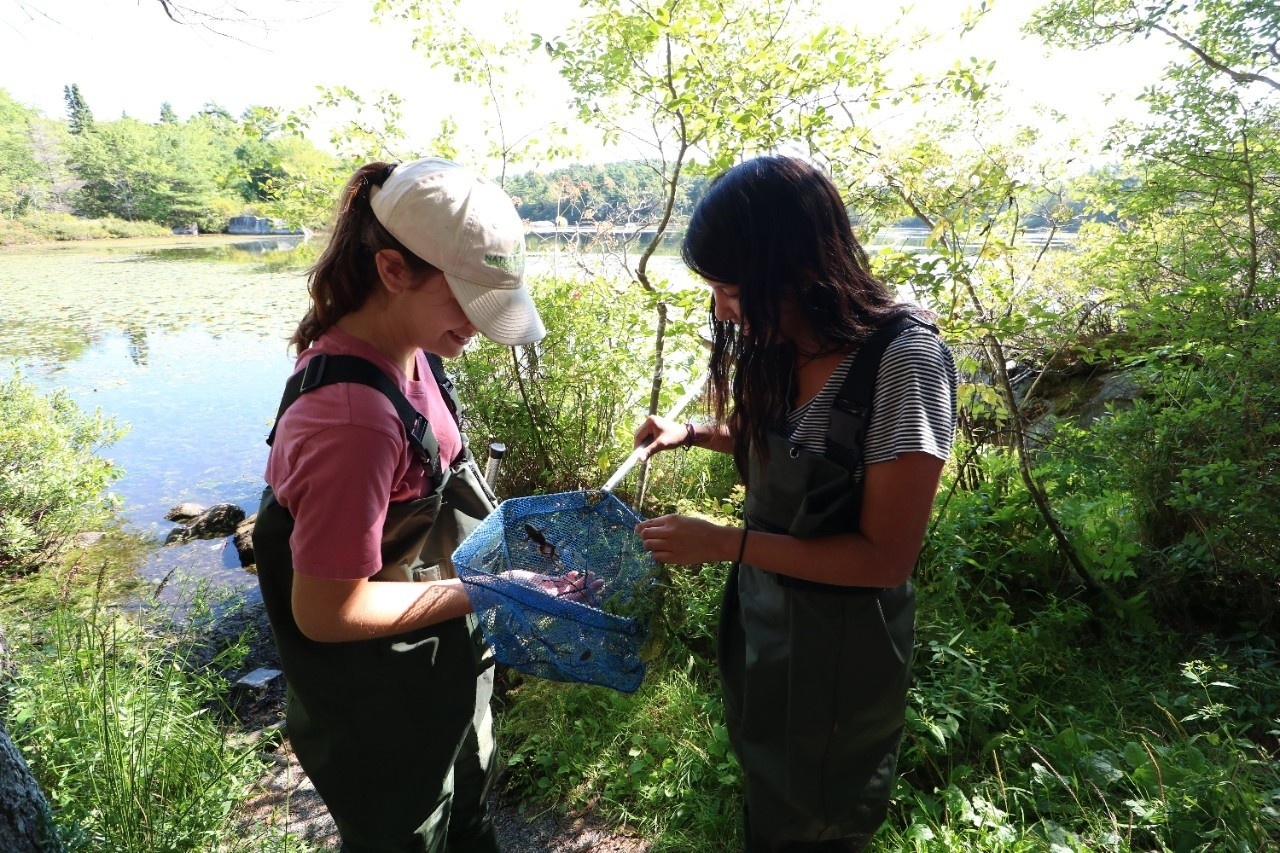ENVS2500 Field Methods in Environmental Science

Ěý
ENVS2500 is a second-year course that is held as a three-hour block in Fall term.
What will I learn in this course?
This course offers a field and lab-based immersion into environmental sampling and analytical methods including both abiotic and biotic components of ecosystems. Scheduled during the fall academic term, students gain skills in wildlife species identification and surveying, and sampling methods for components such as air, sound, and soil. GPS (global positioning system) units and geographic information systems (GIS) are utilized in sampling design, collection, and visualization of results.
Students will have the opportunity to:
·ĚýĚýĚýĚýĚýĚý Develop skills in visual and auditory identification of species in Atlantic Canada, which may include birds, reptiles and amphibians, trees and their associated pests
·ĚýĚýĚýĚýĚýĚý Apply basic field techniques to survey wildlife, and assess soil and environmental noise levels
·ĚýĚýĚýĚýĚýĚý Utilize GPS and basic GIS tools to incorporate a spatial dimension into sampling activities
·ĚýĚýĚýĚýĚýĚý Gain experience utilizing a range of sampling and surveying equipment used in the environmental sciences
What are the expectations for this course?
There are several on and off-campus field visits that are a part of this course. Excursions will go ahead as planned unless there is an extreme weather warning, so students should make sure that they come prepared for the weather. Field trips for this course will be within the Halifax Regional Municipality and will involve some hiking; accommodations can be made, so please speak to the instructor before registering for the class. Participation and class attendance is critical, and you will have lots of opportunities to collaborate with your peers doing group assignments. In 2019, the grade in this course was based on weekly animal identification quizzes, three lab reports covering different topics (species sampling, soils, and urban noise levels), your field notebook, and a final exam.
What do field course alumni have to say?
What do you remember most about the course?
“How fun it was. We got to know each other really well so it was a nice tight knit little group and it was unlike any other course that I had taken yet because it was so outside and hands on, which I really liked. Definitely a practical way of learning which I enjoy because it’s all well and good to read about it in a textbook but doing it is another thing entirely. I really enjoyed it.” – Nina Garrett
Ěý
What does a typical day in this course look like?
“We would usually meet in the classroom and we would have a quick 10-minute quiz, on frog identification and bird identification, both calls and visual identification which was really helpful for the final exam because we had to do that for our final. At the beginning of the semester when it was still nice and warm out we would go and do field work. We went to Frog Pond, Point Pleasant Park, we collected soil samples. And then when it started to get more cold we would do in the lab stuff, so that was our soil analysis... it was really hands-on for the majority of the class.” – Nina Garrett
Do you have any tips for students heading into this course?
“Well, if you like the outdoors, you'll love this. It's great. I'd say definitely don't miss this class because this one's once a week, for three hours, and like you take in a lot and go through a lot of topics. So definitely be there for sure.” – Sam Wallace
“We did the identification stuff and you do you have to kind of go over that every week, I mean you do have the little quizzes but to actually get it drilled in, to be able to put it into a practical application you do have to do a little bit of it of it every week … and I kind of slacked off at the beginning because I didn’t think that it was necessary but it kind of is, so that idea that yes the class is only once a week, but you should be doing little bits of it every week just to stay on top of it.” – Nina Garrett
Looking for a sneak peek of the kinds of assignments and resources in this course? Here are two examples:
Sample assignment #1:Ěý
Sample assignment #2:Ěý
More information, including the most recent course syllabus, can be found under “Second Year Courses” at (hyperlink): /faculty/science/earth-environmental-sciences/programs/undergrate-studies/courses-offered--environmental-science-.html
Ěý
ENVS2500 Field Methods in Environmental ScienceĚý
ENVS3001 Environmental Science Field School
New to field courses, field work, or outdoor pursuits?ĚýHere are some helpful resources.Ěý
